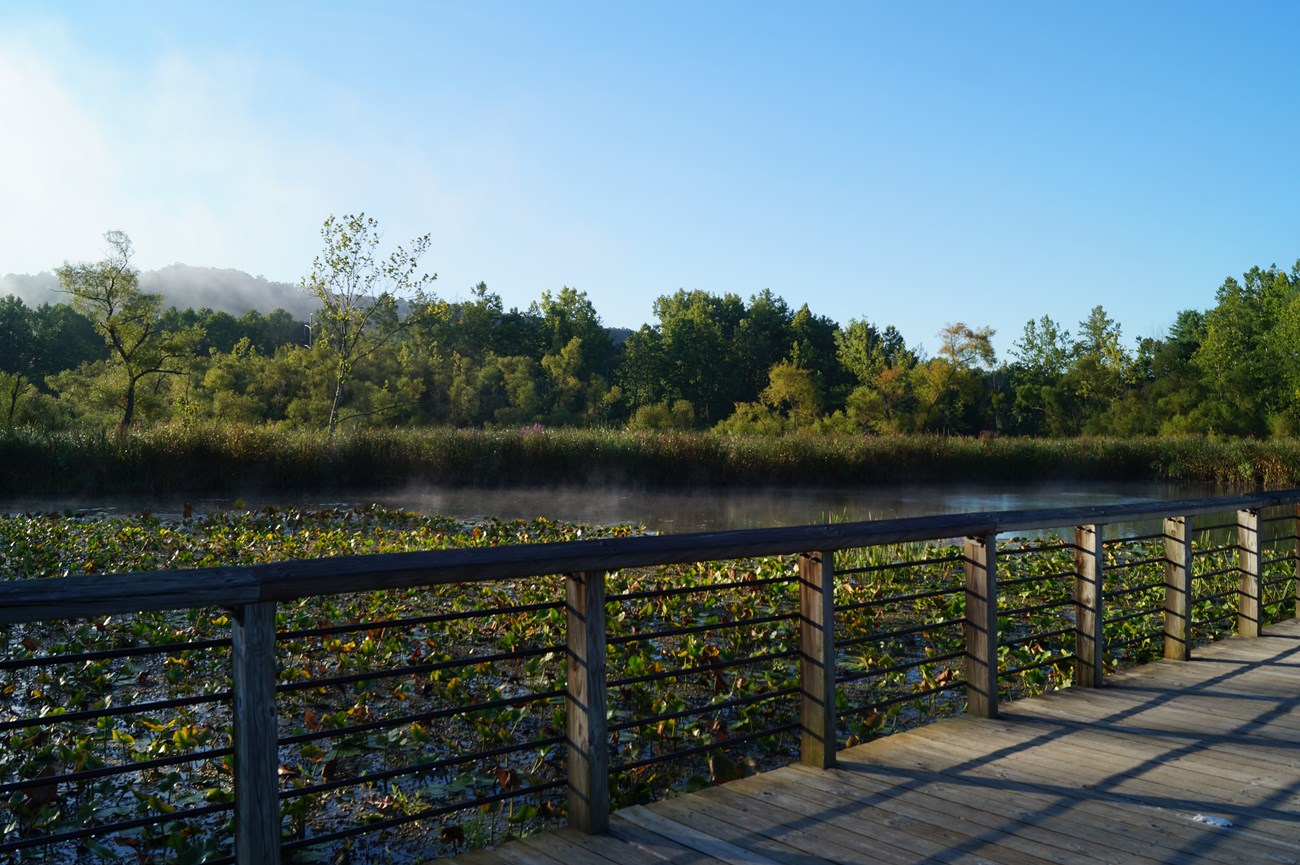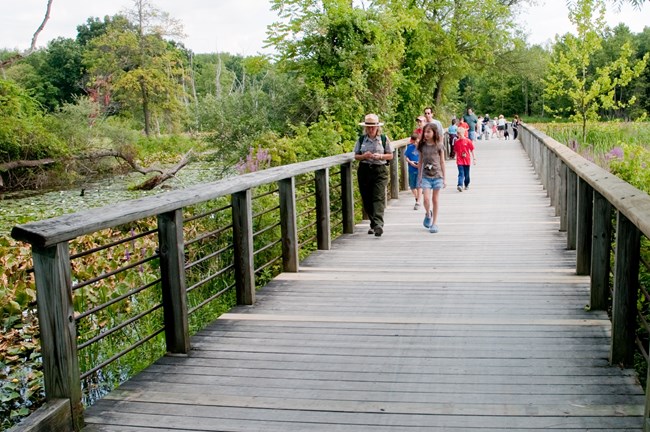
NPS / Sue Simenc Throughout the year, the Beaver Marsh teems with life. Depending on the month, you may be serenaded by choirs of countless frogs, watch turtles swim among lily pads, glimpse a beaver nibbling on a willow branch, or hear northern cardinals call from snowy trees. The Beaver Marsh is among the most diverse natural communities in Cuyahoga Valley National Park. The exceptional scenery and wildlife make it one of the park’s most popular destinations. Here you can enjoy photography, bird watching, and sharing nature with family and friends. Observing Throughout the YearThe marshland boardwalk offers opportunities for watching wildlife at any time of year. Each season has its rewards. SpringAs the marshland thaws in early spring, look for beaver during the late afternoon. Their internal clocks can be out of sync with the timing of dusk, a result of being confined to their lodge over winter. Late afternoon is also when muskrats start to appear from their cattail lodges. Muskrats are much smaller than beavers and have a more rounded head. Their tail is rat-like, not paddle-shaped. Wood ducks and other waterfowl return in mid-March. A variety of songbirds stopover during peak migration from late April through May. By late May, it is common to see snapping and painted turtles basking on floating logs. SummerOver 50 bird species nest annually at the marsh. Early summer is the best time to observe them. Search for Baltimore oriole, tree swallow, wood duck, marsh wren, sora, and Virginia rail. Early summer is also when small beaver kits first venture out of the lodge. In early morning, sleek otters play and groom. On sunny days, northern water snakes bask on logs along the shorelines. On warm evenings, listen for courting green frogs and bullfrogs among the water lilies. At dusk, bats dart on fluttery wings, hunting insects. FallDuring this season, beavers store softwood branches, such as willow and aspen, in front of their lodge as a winter food supply. Look for southbound waterfowl during the fall migration which starts to peak in late October. Sometimes you can spot more than 20 wood ducks within the marsh and surrounding channels. WinterBy mid-December, the marsh is usually completely frozen over. Beaver mostly remain in their warm, cozy lodge, venturing out to feed on their cache of branches or on tubers of nearby water lilies. They are active throughout the winter and do not hibernate. Along the shorelines and among the cattails, search for tree sparrow, white-throated sparrow, and—if you are lucky—swamp sparrow. Visiting and VolunteeringThe Beaver Marsh is located ¼ mile north of Ira Trailhead along the Towpath Trail. The easy walk is accessible by wheelchair or stroller. The Towpath Trail can be congested here. Please exercise caution by staying to the right and watching for passing cyclists. If you are out at night, wear reflective clothing and carry a flashlight. 
NPS / D.J. Reiser Tips for a great visit to Beaver Marsh
Attend a ranger-led hike at the Beaver Marsh to learn more about the history and wildlife in this area! Check our calendar for upcoming events. Identifying Wildlife |
Last updated: July 10, 2023
